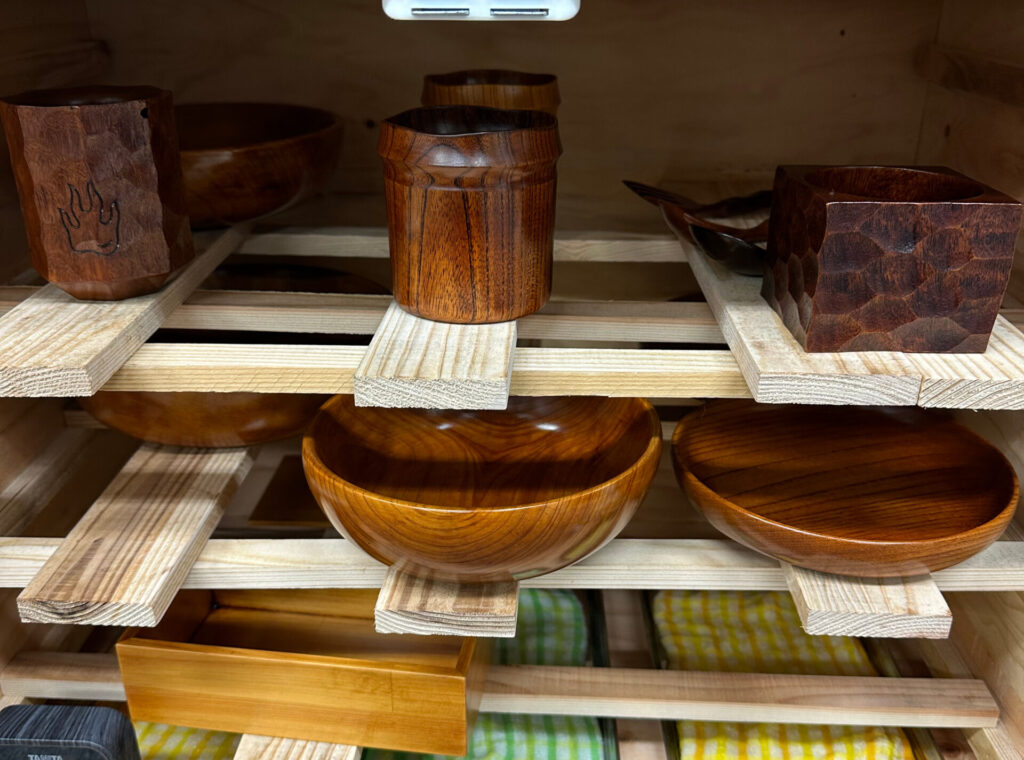
Fuki-urushi is one of Japan’s traditional lacquer craft techniques, in which lacquer is applied to the surface of wood or bamboo and then wiped off. This article describes wipe lacquer in detail, focusing on its characteristics, history, and uses.
Characteristics of Fuki-Ushi Lacquer
- Beautiful Fin ish: The most important characteristic of Fuki-Urushi is its beautiful finish. The smooth surface of the lacquer reflects light and has a unique shine. For this reason, wubi-urushi finished items are highly valued as works of art and crafts.
- Durability: Lacquer is extremely durable, protecting and extending the life of substrates such as wood and bamboo. Lacquer is also used for tableware and containers because of its water and corrosion resistance.
- Unique texture: The lacquer finish has a unique texture, cool to the touch and smooth to the touch.
- Decorative: Wipi-urushi is sometimes combined with gold or silver leaf, shells, or antiques to create extravagant designs.
History of Wiping Lacquer
Wiping lacquer is part of the traditional techniques of Japanese lacquer craftsmanship and has a history that spans over several hundred years. The use of lacquer has been widely practiced since ancient times, and the nuki-urushi technique was developed during the Edo period (1603-1868) and used especially for tea ceremony utensils and furniture. The production of lacquerware is deeply rooted in Japanese art and culture.
Uses of Wiping Lacquer
- Tea utensils: Wipi-urushi is widely used in the production of tea utensils. Tea bowls, tea caddies, tea sets, flower vases, tea scoops, and many other ceremonial tea ceremony utensils are finished with Fuki-Urushi.
- Furniture: Lacquer on wooden furniture and furnishings provides durability and a beautiful finish. Lacquered furniture is part of traditional Japanese interior design.
- Tableware: Wiped lacquer is also used on tableware, especially found on bowls and ojyu. The water resistance and durability of lacquer help to serve meals beautifully.
- Crafts: Wipi-urushi lacquer is widely used in traditional crafts and decorations, and beautifully designed lacquerware is a popular collectible and gift.
summary
Wiping lacquer is part of the traditional Japanese lacquer craft technique, which offers a beautiful finish, durability, and decorative qualities. Used in a wide variety of applications, including tea ceremony utensils, furniture, tableware, and crafts, it is deeply rooted in Japanese culture and aesthetics. Its beauty and quality have attracted many people and are still highly valued today.
